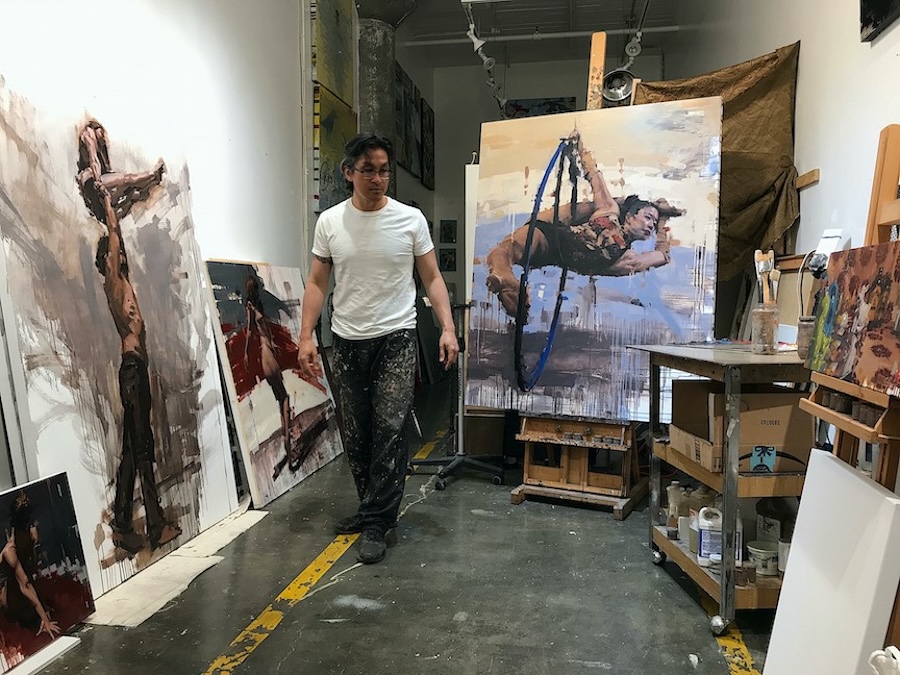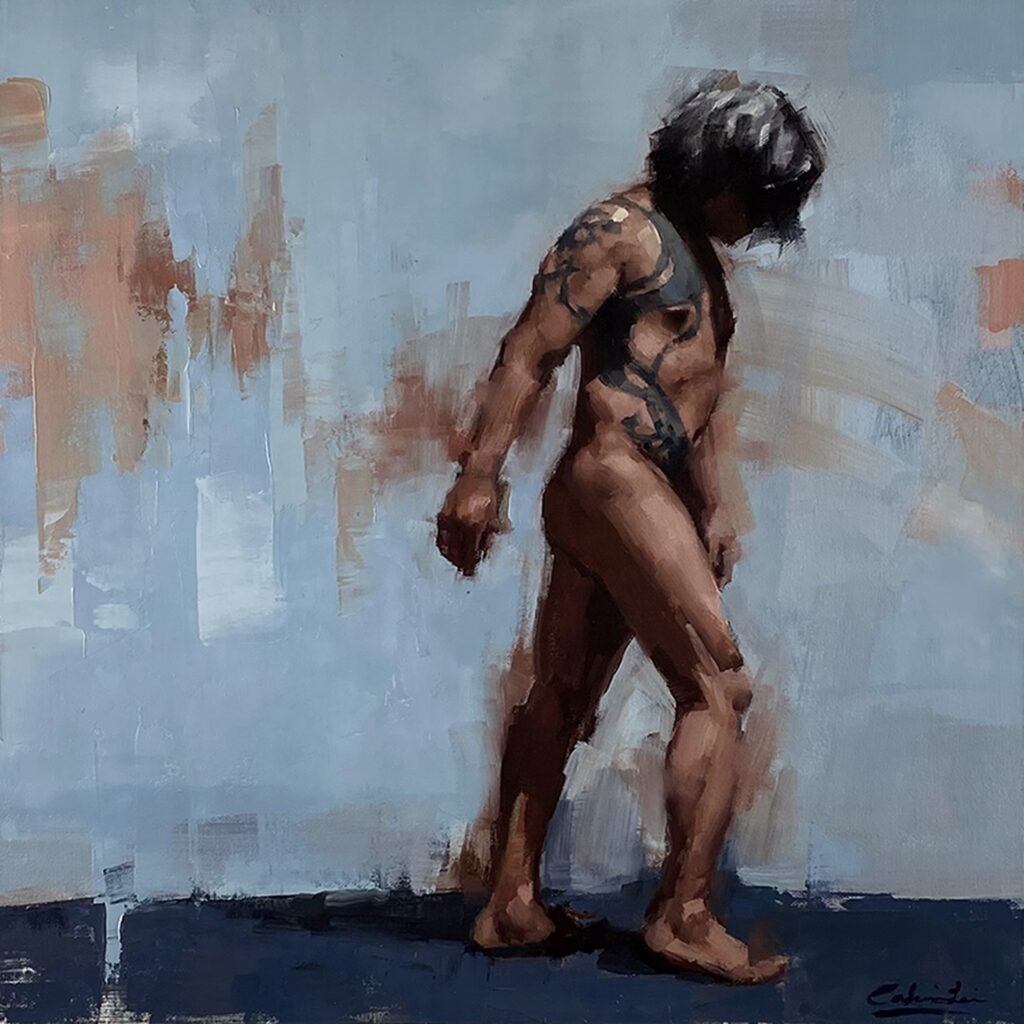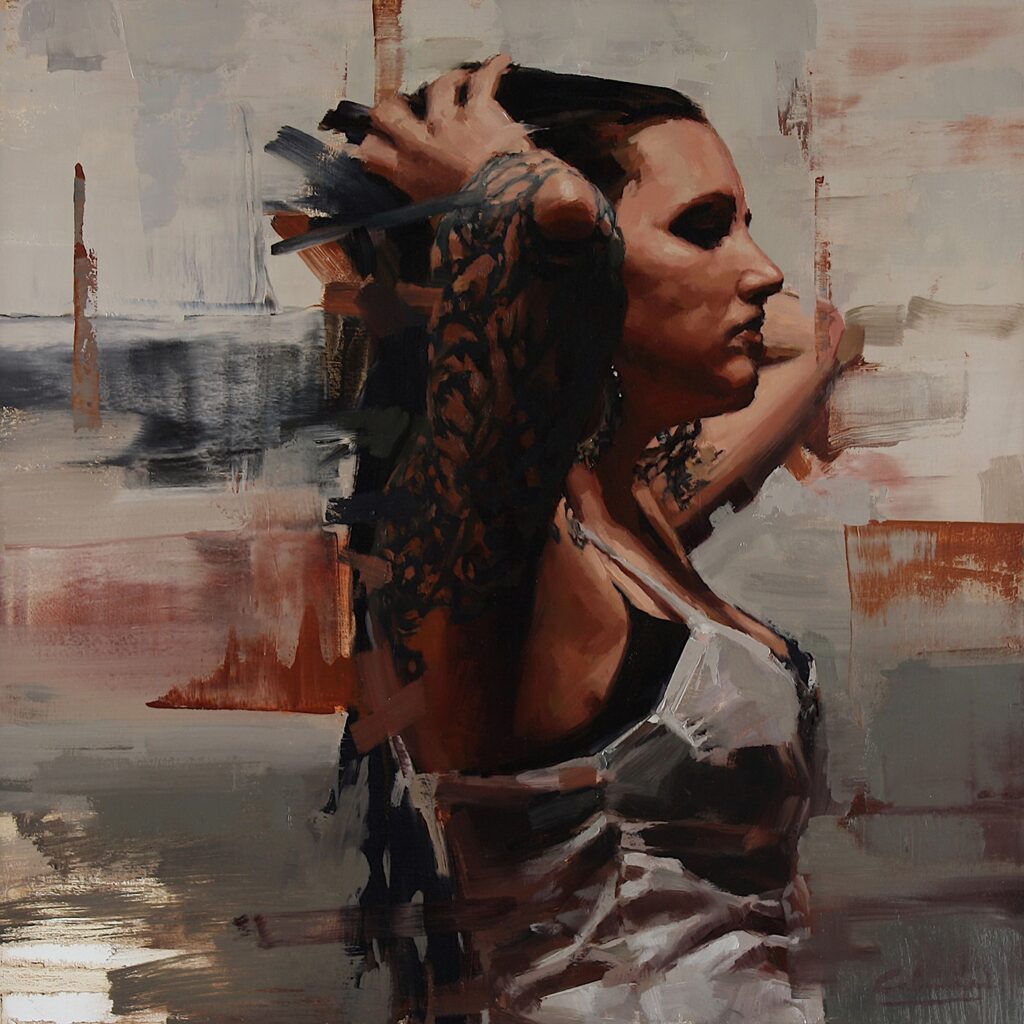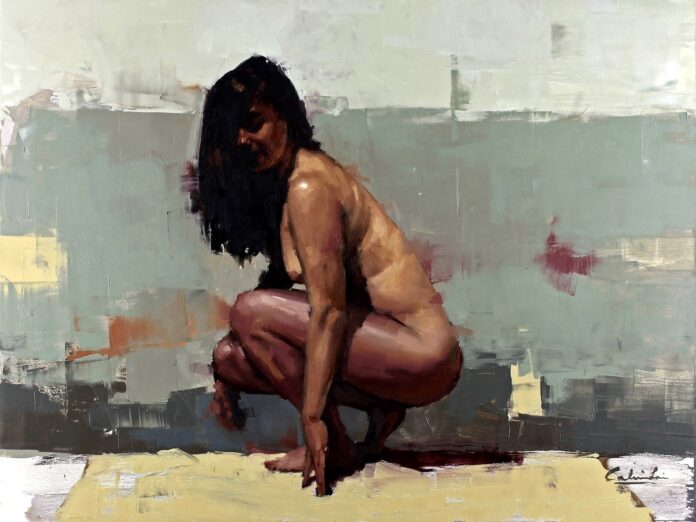When figurative painter Calvin Lai first started making art, he was consumed by a sensation. It was all immersive, it was time altering, it was everything.
“Call it the creative zone, I suppose. As I’ve gotten older, that feeling has dissipated due to outside factors and life events, but sometimes I get a glimmer of it every now and then and when I do it brings me back to that place,” Lai told 48hills.
Lai believes he makes art because he’s chasing that very feeling with every piece he creates. As it is for most dedicated artists, it has also become a habit, like anything else he’s been doing his whole life. He simply can’t imagine a day without it.
“It’s much like breathing or drinking water for me now. I need it to live,” Lai said.
Lai grew up in La Canada, a suburb north of Los Angeles, near Pasadena. He moved to the Bay Area in 1990 to attend California College of the Arts. Lai currently lives in Noe Valley.
“Every artist is a dreamer. You dream about finding a life filled with time to create, you dream about being at a stage where you feel good about your art, you dream about being inspired every day,” Lai said.

He embodies this aspect of what an artist is, through and through. This dream of living a life that is filled with creativity is a source of inspiration that has never left him, even during the most difficult moments.
“It is not enough to snatch an hour here and there for your art, even though it is what living in this society forces an artist to do, but to have a life that is filled with the ability to create every day is one that drives me forward,” he said.
Lai says he becomes depressed and unsatisfied when he cannot express himself creatively, becoming anxious when he lacks the time to hone his craft, to work on becoming a better artist than the day before. Without that ample time to create, his inspiration and motivation can slip into a source of disappointment rather than a source of joy.
“Holding onto the vision of where I want my life to be pushes me to keep working and moving towards it, no matter how incremental it may seem,” he said.
Lai describes his work as painterly, realistic, and expressive and that is indeed what we experience, particularly when we set eyes on his figurative works on canvas and wood panel, emotive and full of movement and energy. In some works, Lai utilizes the classical technique of grisaille—rendering inmonochromatic sepia tones or shades of gray—in order to capture the immediacy of a moment by way of creating much with smaller means.
He has been influenced by 19th century portrait painter John Singer Sargent (1856-1925), who Lai considers to be the father of Modern Realism. “He was able to say so much with only a few brushstrokes. A true master,” Lai said.

Lai has two locations where he works, a shared studio space at 1890 Bryant Street Studios and in his own home, where he began primarily working during the pandemic and has carried over to the present.
“The studio has ample space and I still work there when I need to, but there are no windows in my part of the studio, so even as the pandemic subsided, I’ve ended up working at home more often,” he said.
His apartment is small, but he says the main advantage of working there is its 24-7 access. This enables him to paint in the late morning, break for meals and music practice—Lai plays music from the Balkans (Greek, Albanian, Serbian and Turkish) and other traditional styles from the Middle East and Central Asia, on the clarinet—and then back to painting again into the night.
“I use oils, so I have to be aware of ventilation and safety, but working from home has been just as productive as working in my studio was pre-pandemic,” he said.
Lai often works on several pieces at once or tries to finish something small within a day or two. He uses the slow drying time of oil paints to his advantage; maintaining a malleable medium throughout the day and waiting for larger pieces to dry, he embraces a kind of rotation of work in various stages,. Knowing when something is done has taken Lai a long time to develop, and it is his opinion that knowing when to stop is part of what defines a painter’s style.
“This is based mostly on a feeling, and I’ve learned to judge that based on the momentum of a piece. When I feel it stalling, I know it’s time to stop. When I begin making more and more mistakes, I also know it’s time to stop. But I really do believe that the more you do your art, the more sensitive you become to what the piece needs and when something is finished,” Lai said.

Though Lai started as a traditional realist, his work has evolved. As he continued into his practice, he noticed that he wasn’t enjoying the process and knew something had to change. Lai began distorting parts of his works and adding more expressive marks and painterly gestures. What emerged was a combination of styles still based in realism but with abstract ingredients throughout the form and picture plane.
“I feel that my art today is more aligned with who I am. For the future, though, I feel that more can be done by utilizing the combination of realism and abstract elements to better direct the eye throughout the piece,” he said.
As for subject matter, Lai is most fascinated with the human form and face. He says that noticing and painting our individual differences helps break him out of any sense of solitude that can easily develop for an artist. Included in this daily fascination is exploring the nature of still life, landscape, and cityscape, in paint.
Calvin Lai hopes that viewers of his work will receive two things: the sense of his subjects through precisely rendering a resemblance while capturing the essence of the emotional feeling that resides under the surface.
“I feel that art is most effective when one can recognize, as well as relate to, the subject matter. And that seems best achieved through engaging the viewer visually and energetically,” he said.
In his work as a commissioned, traditional portrait artist in San Francisco, a single work can take anywhere from one month to one year to complete, depending on the size and other factors. Lai works often with Abend Gallery in Denver, Colorado and Signet Contemporary Art in London, England. In his experience, he believes there are many things that determine one’s success in art. Talent, business savvy, and self-care all come into play.
“One of the main things that is essential is to remain persistent. To keep going even when you feel like your art is stagnating or your career is stalling,” Lai said. “In lieu of an abundance of adequate time to do all you need to do to improve your craft or to maintain a creative life, one needs to be persistent and push forward even if it feels like you’re going up the hill backwards.”
For more information, visit his website at calvinlaiart.com and on Instagram.






